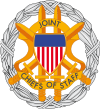
V Corps, formerly known as the Fifth Corps, is a regular corps of the United States Army based at Fort Knox and at Camp Kosciuszko in Poznań, Poland. It was previously active during World War I, World War II, the Cold War, the Kosovo War, and the War on Terrorism.

The 2nd Armored Division was an armored division of the United States Army. The division played important roles during World War II in the invasions of Germany, North Africa, and Sicily and in the liberation of France, Belgium, and the Netherlands. During the Cold War, the division was primarily based at Fort Hood, Texas, and had a reinforced brigade forward stationed in Garlstedt, West Germany. After participation in the Persian Gulf War, the division was inactivated in 1995.

The Allied Joint Force Command Brunssum (JFCBS) is a NATO command with its headquarters at Brunssum, the Netherlands. It was established in 2004.

Adna Romanza Chaffee Jr. was an officer in the United States Army, called the "Father of the Armored Force" for his role in developing the U.S. Army's tank forces.

The Supreme Allied Commander Europe (SACEUR) is the commander of the North Atlantic Treaty Organization's (NATO) Allied Command Operations (ACO) and head of ACO's headquarters, Supreme Headquarters Allied Powers Europe (SHAPE). The commander is based at SHAPE in Casteau, Belgium. SACEUR is the second-highest military position within NATO, below only the Chair of the NATO Military Committee in terms of precedence.

Albert Bryant Jr. is a retired United States Army brigadier general, best known for service as the Chief of Western Hemisphere Operations during and in the aftermath of the September 11 attacks and for his tenure as the Assistant Division Commander of the 4th Infantry Division at the time of the division's detection and capture of deposed Iraqi president Saddam Hussein. Bryant also served as the Deputy Commander of Fort Knox, Kentucky, and the United States Army's Armor School. As Chief of Staff of NATO's Kosovo Force (KFOR), Bryant was the highest ranking American general on the KFOR leadership team in the lead up to Kosovo independence.
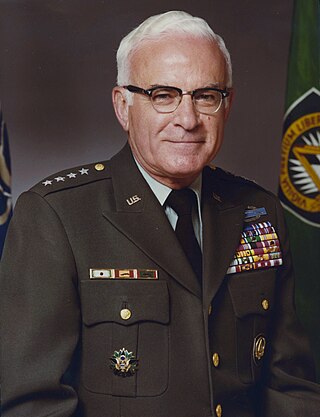
Bernard William Rogers was a United States Army general who served as the 28th Chief of Staff of the United States Army, and later as NATO's Supreme Allied Commander, Europe and Commander in Chief, United States European Command.

John Rogers Galvin was an American army general who served as the sixth dean of the Fletcher School of Law and Diplomacy at Tufts University and a member of the U.S. Commission on National Security/21st Century.

Lieutenant General Guy Carleton Swan III is a retired United States Army officer. His final assignment was Commanding General United States Army North at Fort Sam Houston, Texas.
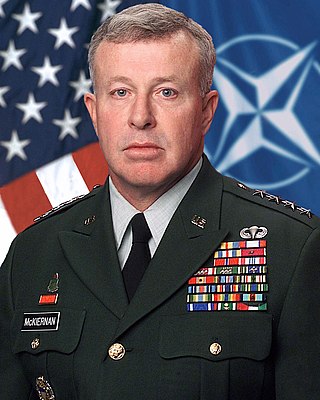
David D. McKiernan is a retired United States Army four-star general who served in Afghanistan as Commander, International Security Assistance Force (ISAF). He served concurrently as Commander, United States Forces – Afghanistan (USFOR-A) from October 6, 2008, to June 15, 2009.
General Dimitrios Grapsas is a Greek military officer, who served as the Chief of the Hellenic National Defense General Staff from August 2007 to August 2009.

Lieutenant General Michael David Maples, USA served as the 16th Director of the Defense Intelligence Agency (DIA), appointed on November 4, 2005. He was promoted to lieutenant general on November 29. Maples also commanded the Joint Functional Component Command for Intelligence, Surveillance and Reconnaissance (JFCC-ISR) for the United States Strategic Command (USSTRATCOM). He transferred his Directorship of the Defense Intelligence Agency and his command of JFCC-ISR to LTG Ronald Burgess on March 18, 2009. Maples formally served as the vice director of management of the Joint Staff.

Brigadier General Michael A. Ryan was a General Officer in the United States Army.

Lieutenant General Michael S. Tucker is a retired United States Army general who served Commanding General of the First United States Army from 2013 until 2016. He formerly served as the Commanding General of the 2nd Infantry Division.
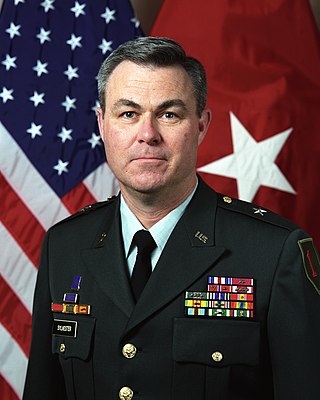
John B. Sylvester is a retired United States Army lieutenant general and decorated veteran of the Vietnam and Gulf Wars. He is best known for his command of the "Tiger" Brigade of the 2nd Armored Division OPCON to the 2nd Marine Division in the Gulf War, and his three tours of duty in the Balkans culminating as the commander of Stabilisation Force in Bosnia and Herzegovina (SFOR). Sylvester was awarded the Silver Star during Operation Desert Storm.
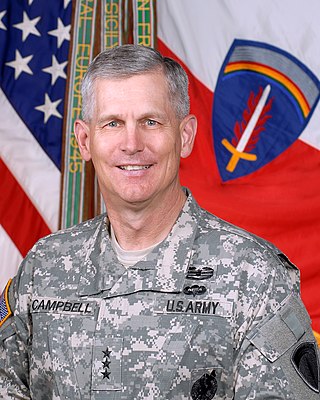
Lieutenant General Donald M. Campbell Jr. is a retired United States Army lieutenant general who served as the commanding general of United States Army Europe. He commanded the United States Army Europe from December 1, 2012, to November 6, 2014.

General Jörg Vollmer is a retired German Army general and served as Commander of the NATO Allied Joint Force Command Brunssum from April 2020 to June 2022. He was the Inspector of the Army from 2015 to 2020.

Egon Ramms is a retired German general who held numerous international commands. Ramms is a father of two.
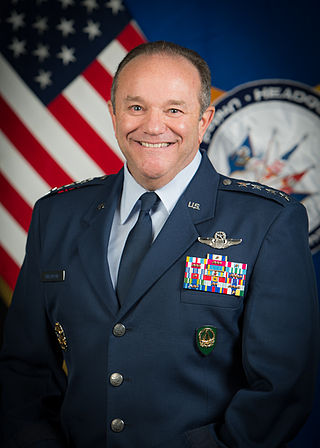
Philip Mark Breedlove is a retired four-star general in the United States Air Force who served as the commander of U.S. European Command, as well as the 17th Supreme Allied Commander Europe (SACEUR) of NATO Allied Command Operations, from May 2013 until May 4, 2016. He previously served as the commander of U.S. Air Forces Europe, which he concurrently served as commander of U.S. Air Forces Africa, commander of Air Component Command, Ramstein, and director of Joint Air Power Competence Center. He previously served as the 36th vice chief of staff of the United States Air Force from January 14, 2011, to July 27, 2012. On 10 May 2013, in a ceremony in Stuttgart, Germany, Breedlove took over the command of USEUCOM. Three days later, on May 13, 2013, he assumed command as SACEUR.

Malcolm Bradley Frost is a retired United States Army major general who last served as Commanding General, Center for Initial Military Training, United States Army, Training and Doctrine Command, Fort Eustis, VA. MG Frost most recently served as Chief of Public Affairs for the U.S. Army at the Pentagon in Washington, DC. Frost's previous assignment was Deputy Commanding General of the 82nd Airborne Division at Ft. Bragg, NC from March 2014 to March 2015. In March 2014, Frost completed his assignment as Deputy Director for Operations at the National Military Command Center, J3 the Joint Staff at the Pentagon. Prior to that, he completed an assignment as the Deputy Chief of Staff for Operations (G3/5/7) for the United States Army Pacific (USARPAC). and commanded the 2nd Stryker Brigade Combat Team, 25th Infantry Division.





